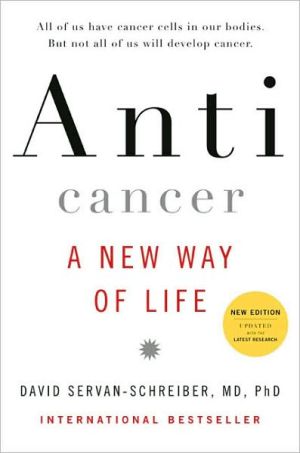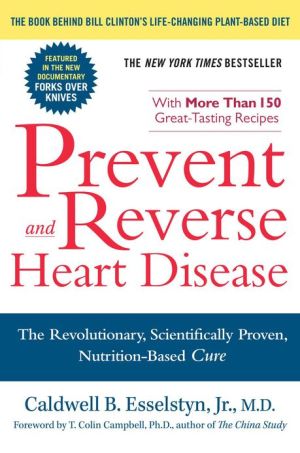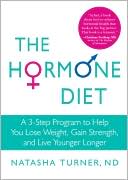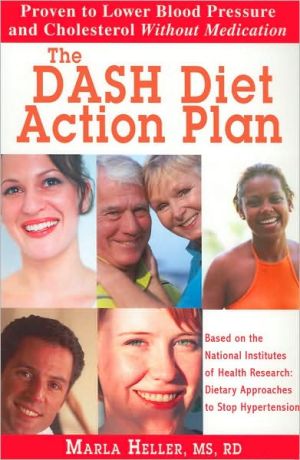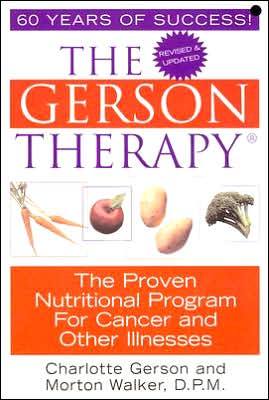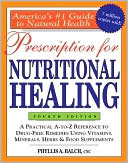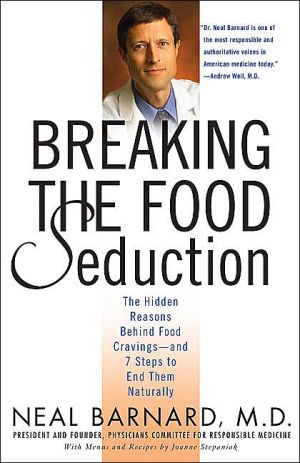The Anti-Inflammation Diet and Recipe Book: Protect Yourself and Your Family from Heart Disease, Arthritis, Diabetes, Allergies and More
The connection between inflammation and heart disease, arthritis, and other chronic ailments has become increasingly clear. Many food allergies and poor dietary choices over stimulate the immune system and cause inflammatory responses that erode the body’s wellness and pave the path for ill health. Based on her naturopathic practice, Jessica Black has devised a complete program for how to eat and cook to minimize and even prevent inflammation and its consequences. The first part of the book...
Search in google:
The connection between inflammation and heart disease, arthritis, and other chronic ailments has become increasingly clear. Many food allergies and poor dietary choices over stimulate the immune system and cause inflammatory responses that erode the body’s wellness and pave the path for ill health. Based on her naturopathic practice, Jessica Black has devised a complete program for how to eat and cook to minimize and even prevent inflammation and its consequences. The first part of the book explains the benefits of the anti-inflammatory diet with an accessible discussion of the science behind it. The second half contains 108 recipes. The author offers many substitution suggestions and includes a healthy ingredient tip with each recipe. Most of the dishes can be prepared quickly and easily by even novice cooks. A week of sample menus for summer months and another for winter are included, as well as a substitutions chart, allowing readers to modify their favorite recipes to increase their healing potential.
The Anti-Inflammation Diet and Recipe Book\ Protect Yourself and Your Family from Heart Disease, Arthritis, Diabetes, Allergies - and More \ \ By Jessica Black \ Hunter House Inc., Publishers\ Copyright © 2006 Jessica K. Black, N.D.\ All right reserved.\ ISBN: 978-0-89793-485-5 \ \ \ Chapter One\ Modern Health Paradigms \ The art of healing comes from nature, not from the physician. Therefore, the physician must start from nature, with an open mind. - Paracelsus\ The current American lifestyle causes a large amount of concern among people who care about health. There has been a dramatic increase in noncommunicable diseases within the last decade, and that number is still rising. According to the Centers for Disease Control and Prevention (CDC), seven out of every ten deaths are attributed to chronic diseases such as cancer, diabetes, and cardiovascular disease (e.g., heart attack and stroke), all of which have a direct nutritional connection.\ Right now at least two paradigms of healing exist in our society. One paradigm, which centers around diagnosing and treating disease, takes a mechanistic approach to illness in which the patient's symptoms are combated with pharmaceuticals and/or surgery. This approach assumes that if thepatient's symptoms improve via painkillers, antibiotics, steroids, or other suppressive treatments, then the patient is cured.\ A second paradigm, the one embraced by naturopathic medicine, looks at a person as a whole and acts to stimulate his or her healing, even before disease is apparent. This paradigm, of which prevention is the cornerstone, strives to maintain homeostasis within the body, allowing it to function optimally and thereby promoting improved health. Disease symptoms function as messengers to tell us what is going on in the body and can direct the practitioner to treat certain systems to bring about better health. Disease merely indicates the existence of a "disease" in the body-that is, an imbalance. When symptoms appear, they are only the tip of the proverbial iceberg that for some time has been developing beneath the surface. This paradigm approaches symptoms as indicators of something going on deeper in the body; rather than merely suppressing the symptom, it strives to find and remove its true cause.\ The Role of Primary Care\ In recent years the federal government has stated that primary care is the ideal setting in which to provide nutritional education to the public. However, according to an article published in Family Practice in 2000, many primary-care doctors are reluctant to educate patients due to their disbelief that dietary intervention can be a worthwhile modality, despite the fact that numerous studies exist showing positive dietary influences on health outcomes. For example, a randomized, controlled trial published in July 2003 by the Journal of the American Medical Association found that adding soy protein, viscous fiber, and nuts can be as effective for lowering cholesterol as adding a prescription statin medication to a low-saturated fat diet.\ Another article published in the New England Journal of Medicine in 2002 stated that diet and exercise may be more effective than pharmacologic therapy at defending against cardiovascular diseases in patients with impaired glucose tolerance. After three years of making diet and lifestyle changes, patients decreased their risk of developing diabetes by 58 percent. In contrast, participants who were only taking metformin, a common pharmaceutical prescription for diabetics, reduced their diabetes risk by only 31 percent. This is a significant difference. In addition, participants following the lifestyle changes had a significant reduction in C-reactive protein (CRP), which is an indirect marker of subclinical inflammation. (Subclinical inflammation is inflammation that can't be detected through the usual diagnostic procedures. The role of inflammation in health is the topic of the next chapter.) Metformin participants affected their CRP levels significantly less than lifestyle-change participants. These findings are huge breakthroughs for diabetic patients-if they get the information.\ Naturopathic physicians are recognized primary-care physicians. In states where they are licensed to do so, they provide lifestyle and diet-modification education in a primary-care setting and actively teach prevention strategies. Naturopathic physicians offer dietary intervention because they believe in it completely. Many naturopathic physicians have seen their patients experience significant health improvements through diet, lifestyle change, and various other naturopathic modalities.\ As a naturopathic physician, it is my duty and goal to educate my patients about how to change their health by changing their lifestyles. I help to put the power of healing into their own hands. The body has the innate wisdom to heal itself; sometimes it just needs a reminder to stimulate its own healing. We like to say that everyone has her or his own inner doctor. A few wise choices in lifestyle habits can change one's quality of life immensely. We just need to take better care of our vessels, and they can do amazing things on their own.\ What Is Naturopathic Medicine?\ A licensed naturopathic physician (N.D.) attends a four-year, graduate-level naturopathic medical school and is educated in all of the same basic sciences as a medical doctor (M.D.), with the difference that he or she also studies holistic and nontoxic approaches to healing, with a strong emphasis on disease prevention and optimizing wellness. A naturopathic physician is board-certified by his or her state and is expected to uphold the highest standards of primary medical care. Currently, fourteen states, the District of Columbia, and the U.S. territories of Puerto Rico and the U.S. Virgin Islands license naturopathic physicians to practice primary care. When searching for a naturopathic physician in states that do not have licensing procedures, it is important to find out about his or her credentials. Make sure you are being treated by a properly trained physician who has attended a four-year, accredited, postgraduate naturopathic medical school. There are currently four such schools in the United States and one in Canada. For more information on finding a naturopathic physician in your area, you can contact the American Association of Naturopathic Physicians or Canadian Association of Naturopathic Doctors (see Online Resources, in the back of the book).\ Naturopathic medicine is successful at treating various acute and chronic diseases. It excels in treating chronic illness when allopathic medicine has nothing left to offer. In acute conditions, it often supports the body's own natural healing mechanism. Some common conditions treated by naturopathic medicine include, but are not limited to, allergies, asthma, anxiety, depression, fatigue, digestive complaints, skin complaints, autoimmune diseases, thyroid problems, menstrual irregularities (including menopause symptoms), acute colds and flus, chronic infections, and cancer.\ Services offered at a naturopathic clinic vary depending on the physician but may include acute care; women's medicine; I.V. therapy including chelation (an intravenous injection of ethylene-diaminetetra-acetic acid, EDTA, an amino acid that eliminates heavy metals and other elements from the body and that has been used to improve metabolic function and blood flow through blocked arteries); wellness; pediatrics; physical medicine and spinal manipulation; nutritional counseling; homeopathy; drainage (a specific form of cellular-level detoxification); and botanical medicine, with a focus on chronic disease and cancer support.\ Naturopathic medicine is no secret. As naturopathic physicians we seek to help the body begin to restore health and maintain homeostasis. We pay attention to all aspects of the patient's body, mind, and spirit to ensure balance in all of these areas. Often, simple dietary recommendations or a few lifestyle changes begin to turn the body around. At other times we need to help the body direct itself in a certain way by supporting specific systems with vitamins, minerals, botanicals, homeopathy, or other natural medicines.\ The underlying principles of naturopathy that help so many individuals achieve optimal health are listed below:\ * First, do no harm.\ * Identify and treat the cause.\ * Impart the healing power of nature.\ * The doctor is teacher.\ * Always treat the whole person.\ * Emphasize prevention.\ If everyone were to live by these principles, rates of illness and premature death would decrease significantly.\ How Disease Begins\ When the body is able to stay in balance and avoid being subjected to any "dis-ease," then it stays healthy. When something happens to disrupt the body's equilibrium, or homeostasis, it becomes more susceptible to disease. Many physiological and psychological factors affect the balance within the body and therefore affect the body's susceptibility to disease.\ According to Henry Lindlahr, M.D., from the book Philosophy of Natural Therapeutics, "One of the primary causes of disease is an abnormal composition of blood and lymph." Blood and lymph are responsible for transporting nutrients to the tissues, essentially feeding their functions, and for carrying away wastes, toxins, and metabolic byproducts to be excreted from the body via the liver and kidneys. The composition of these fluids is solely dependent upon what type of lifestyle practices we follow and what type of nutrients we bring into the body via diet to fuel the vital body processes.\ It follows, then, that diseases are often the result of nutrient deficiency, resulting in the delivery by the blood and lymph of less than adequate amounts of nutrients to fuel cell metabolism. This in turn is the result of an inadequate, unbalanced, or polluted diet. According to Lindlahr, if the diet consists of an excess of low-quality proteins, carbohydrates, and fats, tissues will inevitably be clogged with "morbid matter." This "morbid matter," or toxin accumulation, can interfere with vital cellular functions, thereby becoming pathogenic to many systems in the body. The buildup of toxins in turn supports cellular degeneration, moving the system toward disease, rather than supporting the cellular regeneration needed for healing.\ Depending on the constitution of the individual and on his or her ability to eliminate accumulated wastes, diseases can manifest in many different forms. One individual may experience skin rashes, allergies, and asthma, whereas another, who is less efficient at eliminating wastes, may store waste products in the form of cysts, growths, and eventually cancer. Only when the body is properly balanced can it function optimally, including adequately removing wastes.\ The Flaw in Germ Theory\ Louis Pasteur is responsible for bringing our awareness to the fact that certain microorganisms cause certain diseases. This is the Pasteurian germ theory of disease. For example, Pasteur noticed that diphtheria bacillus is found in diphtheria patients, and thus he concluded that diphtheria bacillus causes diphtheria. Yet diphtheria bacillus can be found in a healthy throat as well. The same can be said about many diseases, including strep throat, staphylococcus infections, pneumonia, whooping cough, and so on. In each of these instances, the same microorganisms can be found in a healthy individual who has been exposed to the germ yet does not contract the disease. The Pasteurian theory that bacteria cause disease simply cannot pass the test of modern research.\ Two mentors of mine, Dr. Dickson Thom, a naturopathic physician practicing in Portland, Oregon, and Dr. Gerard Gueniot, a holistic medical doctor from France, have always taught that disease is only able to affect a body that is susceptible. When a body is no longer in homeostasis for any reason-for example, improper diet, poor lifestyle habits, genetic family history, chronic emotional stress, environmental toxin overload, or sedentary lifestyle-it becomes weaker, rendering it less able to defend itself against certain microorganisms and other disease states. We call this general state of bodily reactivity and health one's "terrain." Based on the strength of one's terrain, disease can be either avoided or inevitable. According to Dr. Rene Dubos, renowned microbiologist at the Rockefeller Institute for Medical Research, "Viruses and bacteria are not the cause of the disease; there is something else. Most human beings carry throughout life a variety of microbial agents potentially pathogenic for them; only when something happens which upsets the equilibrium between host and parasite does infection develop into disease."\ This means it is not the bacterium or virus that affects us; it is the upset equilibrium that weakens our resistance, thereby allowing disease to occur. Regardless of what we call this equilibrium (or homeostasis or terrain or susceptibility), what we are speaking of is the body's ability to remain disease free.\ The Health of Our Children Equals the Health of Our Future\ If we have a strong belief in maintaining a healthy terrain, it follows that we want to promote health in our children. As children grow bigger and stronger, the insides of their bodies are also developing in important ways that we are unable to see. Children's nervous system, brain, and immune system develop throughout childhood. To promote optimal health and development, it is important to protect children's terrains through proper diet and lifestyle. If we focus on minimizing pesticide residues, hormones, and antibiotic residues in foods; including nutritive foods as part of a balanced diet; eliminating food allergies; and eliminating sugars, white flour, and other immune-suppressive foods, children will be much healthier in the long run. If we promote a healthy lifestyle from the start, many children will remain disease free. I believe it is my responsibility to my child to keep her healthy in order to prevent future chronic disease. It is also important to offer children a loving, supportive atmosphere in which to grow and develop, because as you will learn in chapters to come, emotions play an important role in health and disease.\ There is one more thing to note about children's development. When a child is faced with a bacterial or viral insult and gets a cold, flu, or fever, it is a positive reaction. It allows us to see that the child's body is able to react against foreign antigens. It is important for children to get sick and to mount fevers a few times per year. As this happens, the immune system is "practicing" and developing. In our medical practice we often observe that after a child has gone through an illness, he or she will do something new. He or she may say a new word, take his or her first step, learn a new skill, act with a little more conviction about things, or build more self-confidence. This is a truly amazing aspect of childhood development; children develop as their immune response develops. If we damp down the immune response with Tylenol, antibiotics, or any other suppressive treatment, we are telling the body not to react and thus not to practice developing its immune response. If we suppress children's reactions enough times, the body will stop reacting.\ The immune system has many components, and if all components are not exercised and developed, the system can become out of balance. The child whose immune response has been suppressed too often may stop having minor infection reactions such as colds and flus, which are the body's way of fighting against bacteria, viruses, and any other foreign material it is exposed to. Decreasing the proper reaction of the immune system in children allows them to be exposed to many foreign invaders that are never fended off. If these invaders are stored instead of eliminated from the body, they have the potential to cause future health problems.\ Bottom line: Any imbalance in immune function, such as a prolonged exposure to foreign invaders without ridding the body of them, can increase chronic inflammation, decrease the ability to fight off foreign invaders, and increase the potential for autoimmune reactions.\ (Continues...)\ \ \ \ \ Excerpted from The Anti-Inflammation Diet and Recipe Book by Jessica Black Copyright © 2006 by Jessica K. Black, N.D.. Excerpted by permission.\ All rights reserved. No part of this excerpt may be reproduced or reprinted without permission in writing from the publisher.\ Excerpts are provided by Dial-A-Book Inc. solely for the personal use of visitors to this web site. \ \
Contents Foreword....................viiPreface....................ixAcknowledgments....................xiWhy an Anti-Inflammation Diet?....................1Chapter 1: Modern Health Paradigms....................2The Role of Primary Care What Is Naturopathic Medicine? How Disease Begins The Flaw in Germ Theory The Health of Our Children Equals the Health of Our Future What Do We Mean by "Anti-Inflammation Diet"? Chapter 2: Inflammation: What's the Big Deal?....................12What Is Inflammation? Inflammation and Chronic Disease Stress and Inflammation The Harm in Chronic Use of Anti-Inflammatory Medication Chapter 3: The Importance of Diet....................23Mitigating the Effects of Toxic Overload You Really Are What You Eat Food Allergies, Food Intolerances, and Inflammation Certain Foods That Contribute to Inflammation Symptoms of Food Allergies Other Common Food Allergies Chapter 4: The Anti-Inflammation Diet....................34The Building Blocks Eat More of These Foods Lifestyle Choices Mealtime Recommendations A Few More Suggestions Chapter 5: How to Use This Book....................48Converting Yourself and Your Family Be Prepared Modifying Recipes Helpful Items to Have in the Kitchen Sample Menus Recipes....................55Appetizers, Side Dishes, Seasonings, and Spreads....................56Breads, Muffins, and Tortillas....................89Breakfasts....................99Teas and Other Beverages....................116Entrées....................125Grains....................163Salads....................167Soups....................190Sweet Things....................207Appendix:Substitutions Chart....................226References....................228Online Resources....................232Index....................233


